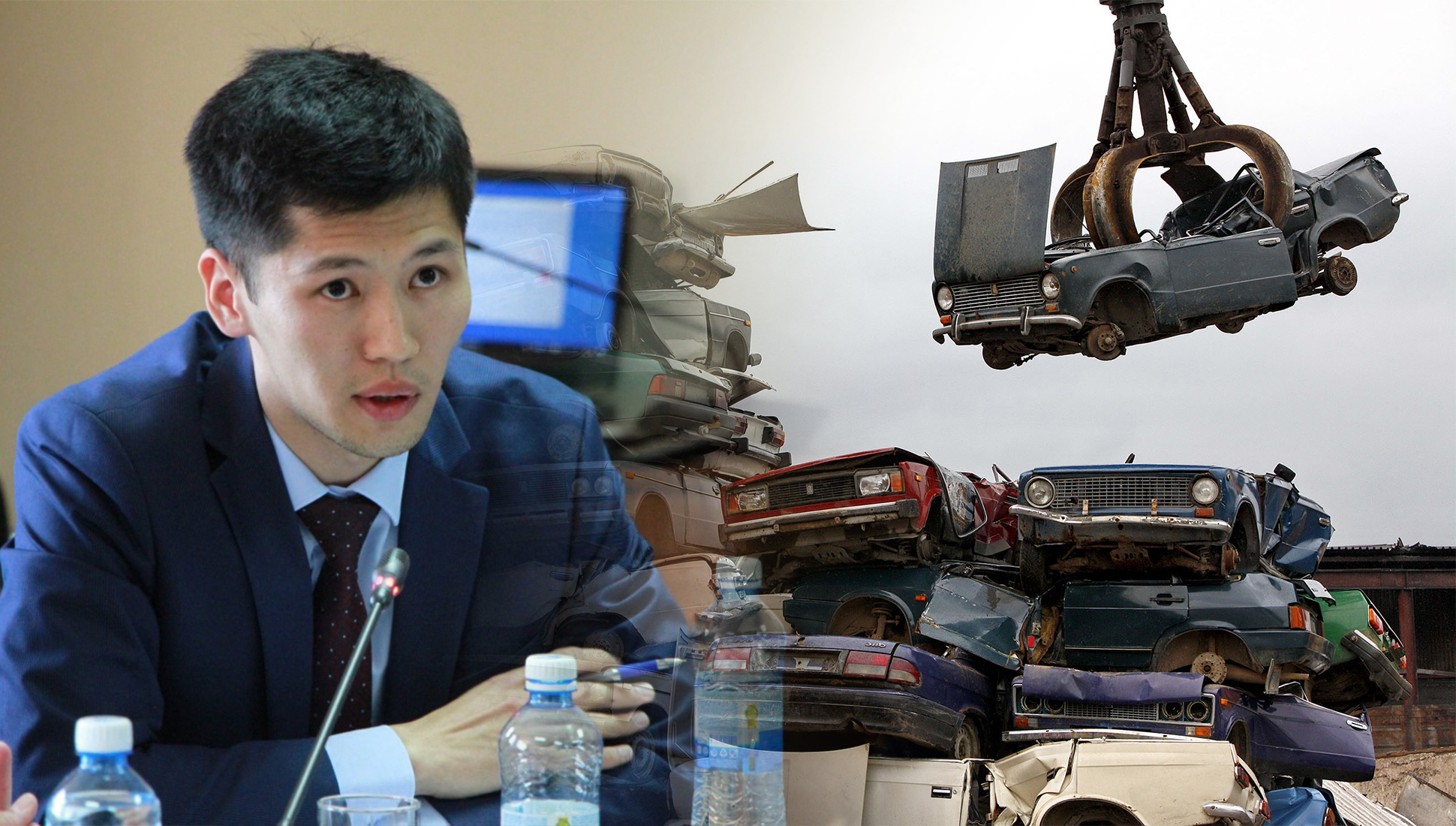
Recently energyprom.kz published an article "How has the automotive fleet and the whole automobile industry of Kazakhstan changed after the reduction of the recycling fee? Review of the situation by the end of 2022". The general message of the article is that the Kazakhstani "car manufacturing" is developing dynamically, and the decrease in the recycling fee in 2022 led to the obsolescence of the car fleet. Well-known lawyer Shyngys Temir made a fact-checking on the material, which we bring to your attention (hereinafter the author's text - Sh. Temir).
The prepared review contains characteristics of commercial order (the material is presented one-sidedly, and the given figures are given in fragments, which distorts the overall picture for the reader). However, the authors' mediocre competence in the field cannot be ruled out.
Let's start with the fact that the authors of the publication labeled all those who called for the reduction of the recycling fee on cars as populists. Among the experts were those who offered to reduce the size of the utilization fee to the actual cost of the car disposal (100-200 thousand tenge).
This cost is already calculated by experts involved in recycling. For example, members of the Republican Union of Industrialists of Secondary Metallurgy offer to dispose of passenger cars for 74 thousand tenge, and from public sources it has become known that the contract between the LLP "Operator ROP" and LLP "RecyclingCompany" disposal costs per unit of vehicle (car, bus, truck) is 123 thousand tenge.
The publication on Energyprom.kz mentions that "the purpose of any taxes and fees around the world, similar in one way or another to the recycling fee in the RK, is, on the one hand, to protect the environmental safety of the state, and on the other hand, to support local production". The authors do not provide any corroboration or references to sources. One cannot agree with this statement, because in order to protect the local production it is customary to introduce completely different barrier measures, such as import customs duty, which is already introduced in Kazakhstan, for cars it is 15% (with some exceptions).
According to Article 386 of the Environmental Code, the recycling fee in Kazakhstan is a payment to the EPR operator made by the producer (importer) for organizing the collection, transportation, preparation for reuse, recycling, neutralization and (or) disposal of waste generated after the loss of consumer properties of products (goods).
This means that the sole purpose of the recycling fee for motor vehicles should be exclusively the disposal of defective vehicles. State management was guided by this logic when introducing the recycling fee in developed countries, because the purpose of collecting the recycling fee is to protect the environment (for example, in Norway and the Netherlands the recycling fee does not exceed 200 thousand tenge, and in Japan it can be less than 50 thousand tenge, depending on the parameters of the car).
The authors of the review in question complain, that because of twofold reduction of duties on cars in May, 2022 the country had a great flow of junk cars and even cite the state statistics (from May until December, 2022 the quantity of cars older than 10 years has increased by 33,7 thousand pieces, and the quantity of relatively fresh cars younger than 3 years - only by 28,2 thousand).
At the same time, the authors of the publication ignore the information that the car fleet became obsolete right after the introduction of recycling fee, which is clearly evidenced by the state statistics. If on January, 1st, 2016 (date of introduction of recycling fee) the number of cars older than 10 years was 2,23 million, on January, 1st, 2023 it was already 2,76 million (i.e. for 7 years of existence of recycling fee the number of cars older than 10 years has increased by more than half a million).
The authors also ignore dynamics of decrease in indicators of population's provision with cars. If before the introduction of the recycling fee the number of cars in personal ownership per 100 people was steadily increasing and on January 1, 2016 was 22 cars, then immediately after the introduction of the recycling fee and the fee for primary registration this figure began to rapidly decline, and today it is 18.6 cars per 100 people (in 2012 it was 20.5 cars).
The thesis that the reduction of the fee for the initial state registration of cars will increase the flow to the Kazakh market of junk cars also does not stand up to criticism. Today, this fee for vehicles under 2 years is 0.25 monthly calculation indices (MCI) (less than 1 thousand tenge), from 2 to 3 years - 50 MCI (172.5 thousand tenge), older than 3 years - 500 MCI (1 million 725 thousand tenge). That is, according to the authors of the review, cars older than 3 years are already junk cars.
In order to impede the importation of really junk on wheels into the country, the fee for the initial registration could be reduced to 25-50 MCIs, if the age of the car does not exceed 7-10 years. And only for really old cars older than 10 years could be charged an initial fee of 500 MCI. With the current status quo the primary fee will continue to play the role of a purely barrier measure in the interests of the owners of the shops for the collection of cars.
Separately, it is worth noting the traffic accident statistics cited by the publication with reference to an increase in the number of traffic accidents (crashes) in 2022 compared to 2020 and 2021. In covid 2020, there were 13,500 accidents, in 2021 there were 13,900 accidents, and in 2022 there were already 14,800 accidents. It's important to keep in mind here that there were massive traffic restrictions in 2020 and 2021, especially in 2020. Therefore, it is incorrect to compare the 2020 figures with 2022.
Moreover, if you pay attention to the dynamics of accidents on the roads, with the exception of covid 2020 and 2021, there were fewer accidents in 2022 than in the previous 5 years (2015 - 18.9 thousand accidents, 2016 - 18 thousand, 2017 - 17 thousand, 2018 - 15.8 thousand, 2019 - 16.6 thousand). The same applies to the number of people injured in traffic accidents.
The position of the Ministry of Industry looks especially cynical against this background, as last year it initiated the reduction of safety parameters of vehicles. On October 22, 2022 the government decree № 843 was passed, which legalized production of unsafe cars with outdated equipment in Kazakhstan (refusal of ABS and ESP systems, returning to ecological class of 80s, cancellation of requirement to install airbags).
And though afterwards the officials repeatedly stated that not a single unsafe car would roll off the assembly line in Kazakhstan, the explanatory note to the governmental resolution № 843, prepared by the Ministry of Industry, stated the true purpose of lowering the safety standards - uninterrupted stable production of wheeled vehicles in conditions of significant shortage of some components produced in third countries. So the state is ready to risk the lives of its own citizens for the selfish interests of car assemblers.
In its publication Energyprom.kz also draws an unfounded conclusion, that the system of preferential crediting from the state which the authors call "a really adequate measure of support of citizens and manufacturers" has much more positive influence on renewal of car fleet.
Firstly, financing of privileged car lending from the means of utilization fee is an illegal measure, because the utilization fee can be spent only on ecological activities, which is not stimulation of sales of cars even if they are made locally but with internal combustion engines.
Secondly, 100 billion tenge was allocated from the money collected from the recycling fee, which was launched in May last year. More than 12.6 thousand cars were bought on this money, whereas Kazakhstan's need for new cars given the current dynamics of the car fleet obsolescence is hundreds of thousands of cars a year. How this "adequate measure" will help to renew domestic car fleet, Energyprom.kz does not specify.
In addition, the country will be legalizing foreign cars until July. As of February 17, 2023 over 32 thousand cars were legalized (owners of over 73 thousand cars received prior consent for legalization). At the moment the number of legalized cars may be 50-60 thousand, and among these cars there are many "old" cars.
It is quite possible that the mass legalization of cars will have a negative impact on this year's statistics, but at least we will have the most reliable data about the number and age of cars used in the country.
The authors of the publication on the website Energyprom.kz reminded me of a famous quotation, the authorship of which is attributed to various historical figures: "There are three kinds of lies: lies, blatant lies, and statistics". Whenever people try to convince me of illogical things, I try to make sense of such lies. Presented as a blessing, the recycling fee was no exception.
Kazakhstani car fleet has a chance to be gradually renewed. But for this purpose the regulator should first reduce the size of the recycling fee (as well as the fee for the initial registration) to the cost of the actual disposal of the vehicle.
Смотрите больше интересных агроновостей Казахстана на нашем канале telegram,
узнавайте о важных событиях в facebook и подписывайтесь на youtube канал и instagram.









































Обсуждение